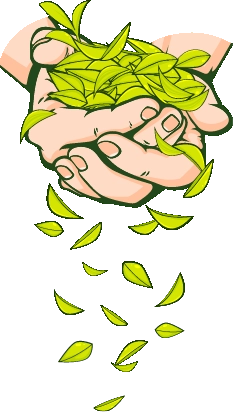Tea Cultures and Ceremonies : Tea Culture in Turkey
Surprisingly, for a country that is traditionally known for its strong, black coffee, Turkey is at the top spot in per capita consumption of tea. What makes this even more surprising is the fact that tea in Turkey is a fairly recent phenomena – only in the last 100 years that tea has become central to Turkish life and culture.
Pronounced Çay (chai), tea in Turkey is much more than a hot beverage. Like in most other countries, tea is a an integral part of the everyday life and social fabric of the people of Turkey. From morning to midnight, from streets to shops, from meals to meetings and from ceremonies to celebrations – everything revolves around Çay.
History
Even though tea has been known in Turkey since 1500s due to its location along the ancient Silk Road, it was only in the 20th century that tea started gaining popularity. Tea became an alternative to the more expensive coffee. However, it was the First World War that changed fortunes of tea in Turkey : with the fall of the Ottoman empire, coffee not only became prohibitively expensive, but also, was often unavailable in Turkey. The founding father of the Turkish Republic, Mustafa Kemal Atatürk, urged the people to drink tea – which was domestically grown in Turkey.
Since then, tea has become an integral part of the Turkish culture.
Ince-bellis and Çaydanlik
Think of Turkish tea and the first image that comes to mind is that of the delicate, transparent tulip-shaped glasses. Known as ince-bellis (thin waist), these are synonymous with tea in Turkey. Strong, intense red tea is served in these ince-bellis with small plates.
Tea in Turkey in always had without milk or lemon, but with loads of beet-sugar cubes. Unlike in Russia or Iran, the sugar cubes are dissolved in the tea to sweeten it.
Tea is prepared in Çaydanlik – a double-stacked tea kettle, very similar to the Russian samovar. The larger, lower kettle is used to boil water. The smaller kettle is used to brew the tea. Loose-leaf tea is put in the smaller pot and then hot water from the lower kettle is poured to make a very strong tea. This is then served in the ince-bellis glasses. Guests can add hot water to dilute their tea to taste. The strongest tea is koyu (dark), followed by tavşan kani (rabbit’s blood) and açik (light). For most people in Turkey, the preferred colour of the tea they love is rabbit’s blood!
As Turkish tea is hot and strong, it is always served in small glasses instead of large cups. The Turkish people always drink their tea piping hot. Since ince-bellis do not have a handle, the best way to hold the glass with hot tea is using the thumb and the fore-finger at the protruding rim, to avoid getting burnt.
So popular are ince-bellis for tea-drinking in Turkey that about 400 million of these are sold annually in Turkey. This amounts to almost six per person per year! nearly six per person.
Desserts
Tea is Turkey is always served with traditional sweet-salty biscuits called Kurabiye. Famous Turkish sweets like Baklava, Kunëfe and the Helva are also invariably served with tea.
Çay Bahceşi : Turkish Tea Gardens
What Chaikhans are to Central Asia and Qaveh Khanehs are to Iran, Çay Bahceşis are to Turkey. These are sprawling gardens with dotted with shady trees. Picturesque and open, these gardens offer a warm, friendly and informal setting where friends and families come together for a relaxed outing over cups and cups of tea. Simple, leisurely and pocket-friendly, Çay Bahceşi is where old friends meet over a cups of tea playing board games – the most popular of which remain the backgammon.
Turkish Tea at Home
Like in all other cultures in Asia, hospitality is the hallmark of Turkish culture. Every guest is welcomed with cup of tea. Freshly brewed in the family Çaydanlik, the host will pour out strong tea in ince-bellis for the guests. The guests will then add more hot water to weaken the tea to their liking. Tea is always served with traditional biscuits and sweets. The host will keep pouring tea for the guest as a sign that they are welcome, and should not leave. For the guests, a polite was of indicating that they have had enough tea and do not want any more, is to put the spoon across the glass.
Even though tea became popular in Turkey only about 200 years ago, it has today become intricately intertwined in all aspects of Turkish life and culture. From the tulip-shaped glasses to the beet-sugar cubes to the Turkish tea gardens, a very distinctive and proud culture and legacy has formed around Turkish tea. How deep tea is embedded in everyday Turkish lives is reflected in this popular folk saying
“Caysiz sohbet, aysiz gok yuzu gibidir”
(Conversations without tea are like a night sky without the moon)

Tea is a religion in the art of life.

